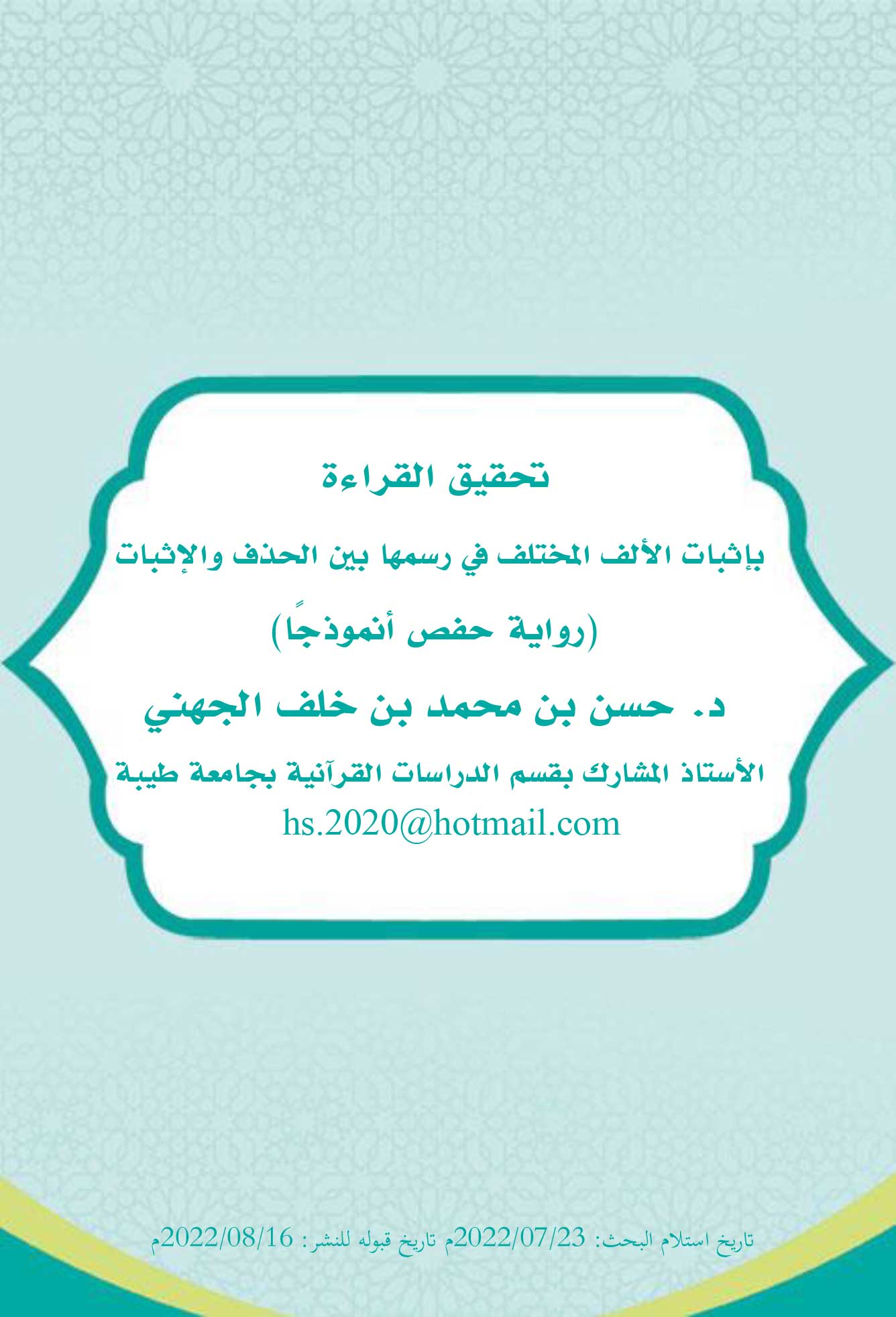The Authentication of Recitation by Mentioning the Alif Whose Inscription is Differed Upon Between Omission and Mention
(The Narration of Hafs As Case Study)
DOI:
https://doi.org/10.61821/3rnke858Keywords:
Qur’anic texts, Qur’anic narration, Ottoman calligraphy, mentioning the alif, HafsAbstract
The research aims to study differences of Qur’anic texts
regarding mention of Alif or omission, by following the
descriptive and deductive methodology, through the allencompassing reading of the narration on the word mention and
omission in the same word, from books and sources of Qur’anic
calligraphy science, and impact that on the work on contemporary
Qur’anic texts, and their disparities and differences .
The research was prefaced with the obligatory of adherence
to Ottoman calligraphy, followed by the explanation that ease of
recitation is a fundamental rule in the inscription of Qur’anic text
and its authentication, and the correctness of adopting one of the
ways of calligraphy, and that the best approach is to confirm the
recitation calligraphically, and inscribing Qur’anic text based on
the narration, as a means of ease for the reciters, and as
simplification for students .
The most one of the research results: is the correctness of
adopting one of the ways of word inscription, so far, the narration
on it is authentic Also, to inscribe Qur’anic text based on the narration with
which it was written authentically.
Allah is the Greatest and the Most Knowledgeable, and peace
and blessing upon Prophet Muhammad, his relatives, and his
companions.
Downloads

Downloads
Published
Issue
Section
License
©This article is an open access article distributed under the terms and conditions of the Creative Commons Attribution (CC BY) license



